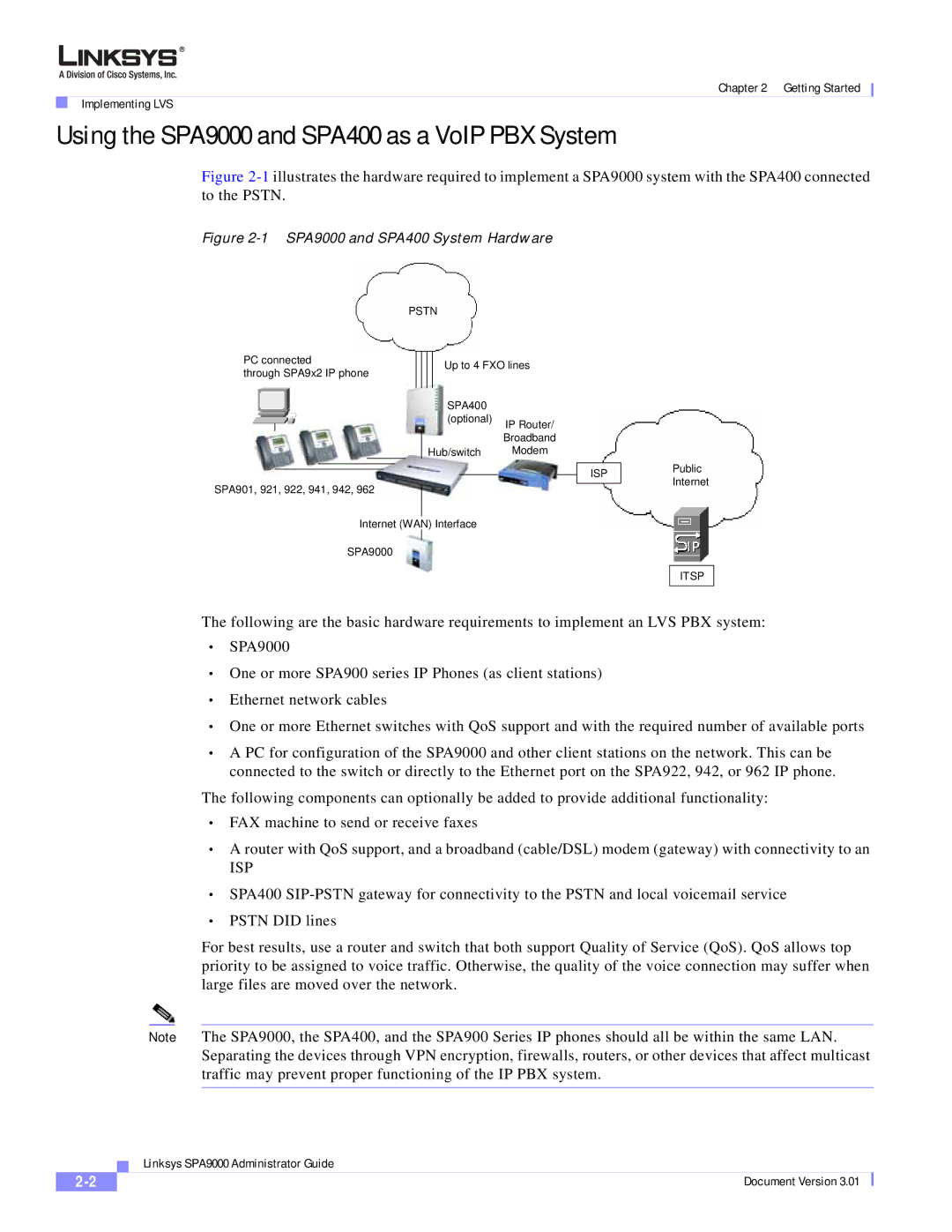
Chapter 2 Getting Started
Implementing LVS
Using the SPA9000 and SPA400 as a VoIP PBX System
Figure 2-1 illustrates the hardware required to implement a SPA9000 system with the SPA400 connected to the PSTN.
Figure 2-1 SPA9000 and SPA400 System Hardware
| PSTN | ||||
PC connected |
|
|
|
| Up to 4 FXO lines |
|
|
|
| ||
through SPA9x2 IP phone |
|
|
|
| |
|
|
|
|
| |
|
|
|
|
|
|
SPA400
(optional) IP Router/
Broadband
Hub/switch Modem
SPA901, 921, 922, 941, 942, 962
Internet (WAN) Interface
SPA9000
ISP
Public Internet
ITSP
The following are the basic hardware requirements to implement an LVS PBX system:
•SPA9000
•One or more SPA900 series IP Phones (as client stations)
•Ethernet network cables
•One or more Ethernet switches with QoS support and with the required number of available ports
•A PC for configuration of the SPA9000 and other client stations on the network. This can be connected to the switch or directly to the Ethernet port on the SPA922, 942, or 962 IP phone.
The following components can optionally be added to provide additional functionality:
•FAX machine to send or receive faxes
•A router with QoS support, and a broadband (cable/DSL) modem (gateway) with connectivity to an
ISP
•SPA400
•PSTN DID lines
For best results, use a router and switch that both support Quality of Service (QoS). QoS allows top priority to be assigned to voice traffic. Otherwise, the quality of the voice connection may suffer when large files are moved over the network.
Note The SPA9000, the SPA400, and the SPA900 Series IP phones should all be within the same LAN. Separating the devices through VPN encryption, firewalls, routers, or other devices that affect multicast traffic may prevent proper functioning of the IP PBX system.
| Linksys SPA9000 Administrator Guide |
Document Version 3.01 |
